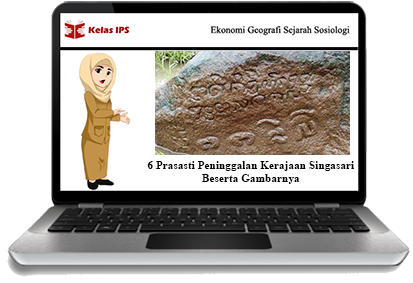Legacy of the Singasari Kingdom

Singasari registration
The place of the discovery of this inscription is in the district of Malang, namely the region of Singasari. The inscriptions in this inscription use a Javanese script and were written in 1351 AD. The content of Singasari’s inscription concerns the respect for the construction of a funerary temple by Mahapatih Gajah Mada.
In this article, the first part contains the date written in detail as well as a description of the location of the celestial bodies. Then, the writing continued in order to write the inscription, namely to preach on the builders of the funeral temples.Manjusri registration
This inscription was written on the back of the statue of Manjusri in the form of a manuscript. The year written on this inscription is 1343. The Manjusri inscription which is currently in the National Museum of Jakarta was placed once in the temple of Jago. This is because the place of origin of the Manjusri inscription is indeed in the temple of Jago.Wurare registration
The Wurare inscription is a historical heritage of the Singasari kingdom which contains writings on a memorial. The commemoration took the form of the coronation of the statue of Mahaksobhya which was in a place called Wurare.
The language used in this inscription is the Sanskrit language with a description of the time, namely November 21, 1289 AD. The purpose of making this inscription is as a form of respect for King Kertanegara who has reached the degree of jina.Registration Mula Malurang
It is a registration in the form of a reward certificate and also as an approval of the villages of Mula and Malurung. The gift was given to a person named Pranaraja. The inscription Mula Malurang has a shape similar to copper plates.
The publication of this inscription was ordered by King Kertanegara by his fathers in 1255. The discovery of this inscription plate was in another era between the two. A plaque was found around the town of Kediri in 1975.
Then the second plaque was discovered in 2001 precisely in May. The location of the discovery of the second plate is not much different from the discovery of the previous plate in the booth of the seller of loan products. But now the two plates have been fixed at the National Museum in Jakarta.Amoghapasa registration
The Amoghapasa inscription is the inscription written on the back of the stele (folder) of a stone statue called Amoghapāśa pāduka, as mentioned in the Padang Roco inscription. In 1347, Adityawarman added a chisel to the back of the statue to declare that this statue symbolizes it. This inscription is now kept at the Indonesian National Museum in Jakarta under the inventory number D.198–6469 (part of the statue).
Sumber:
https://kelasips.com/
https://www.text.co.id/
https://grammar.co.id/